Maps & Minds: Geospatial Analytics for Studying Human Cognition
Garrett C. Millar
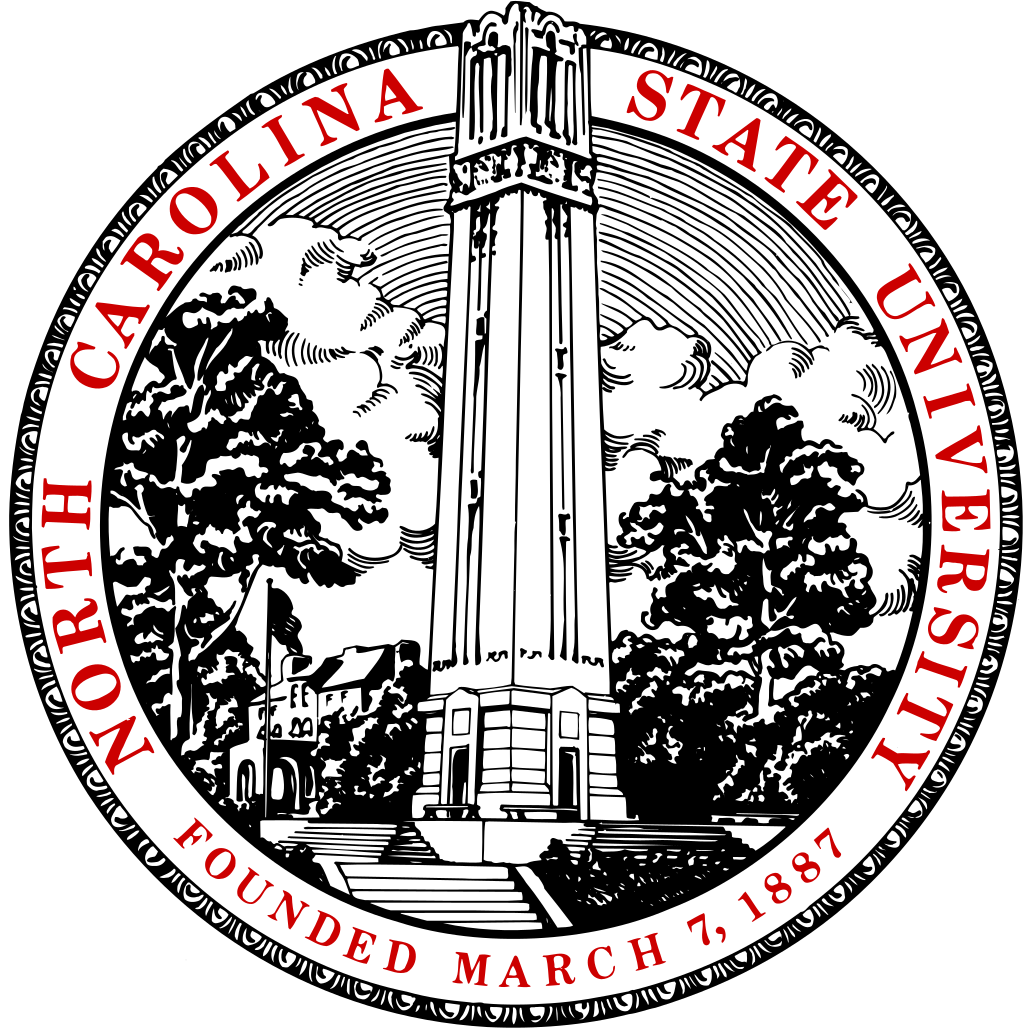
Preliminary Oral Examination
November 4th, 2020
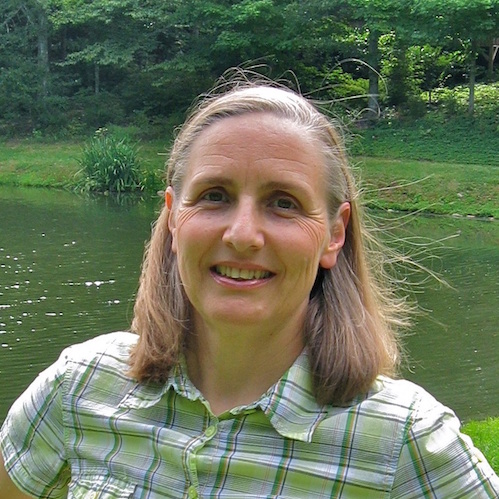 |
Helena Mitasova Committee Chair |  |
Ross Meentemeyer Committee Member | 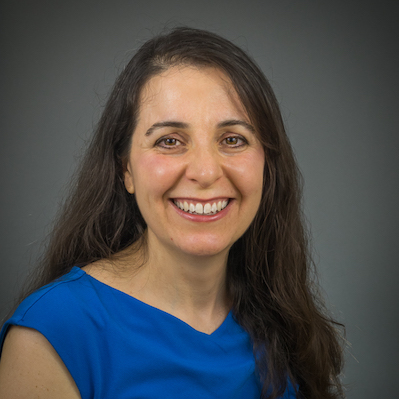 |
Laura Tateosian Committee Member |  |
Aaron Hipp Committee Member |
Pre-CGA Background & Experience
- Designed and ran studies on student learning and intelligent tutoring systems in science domains
- Measured student learning using eye-tracking, physiological devices, and facial recognition software (emotions)
MetaTutor IVH Project Designed and tested intelligent multi-agent hypermedia systems for collecting student learning data (e.g., eye-tracking, log-files, facial expressions of emotions) to support STEM learning.
Crystal Island Project Worked with colleagues in Computer Science to design studies examining how students learn about science and literacy from game-based learning environments.
Navigating the Mind: Geospatial Analytic Approaches for
Assessing Human Cognition
Completed Work
Ongoing Work
Chapter 1 Tangible Landscape: A Hands-on Method for Teaching Terrain Analysis
- Research Objective: Test the effectiveness of a hands-on method for teaching spatial concepts using Tangible Landscape
- Tested students’ acquisition & transfer of knowledge
- Examined students’ ratings of the system’s usability & user experience
Interaction, Feedback, & Example Solutions
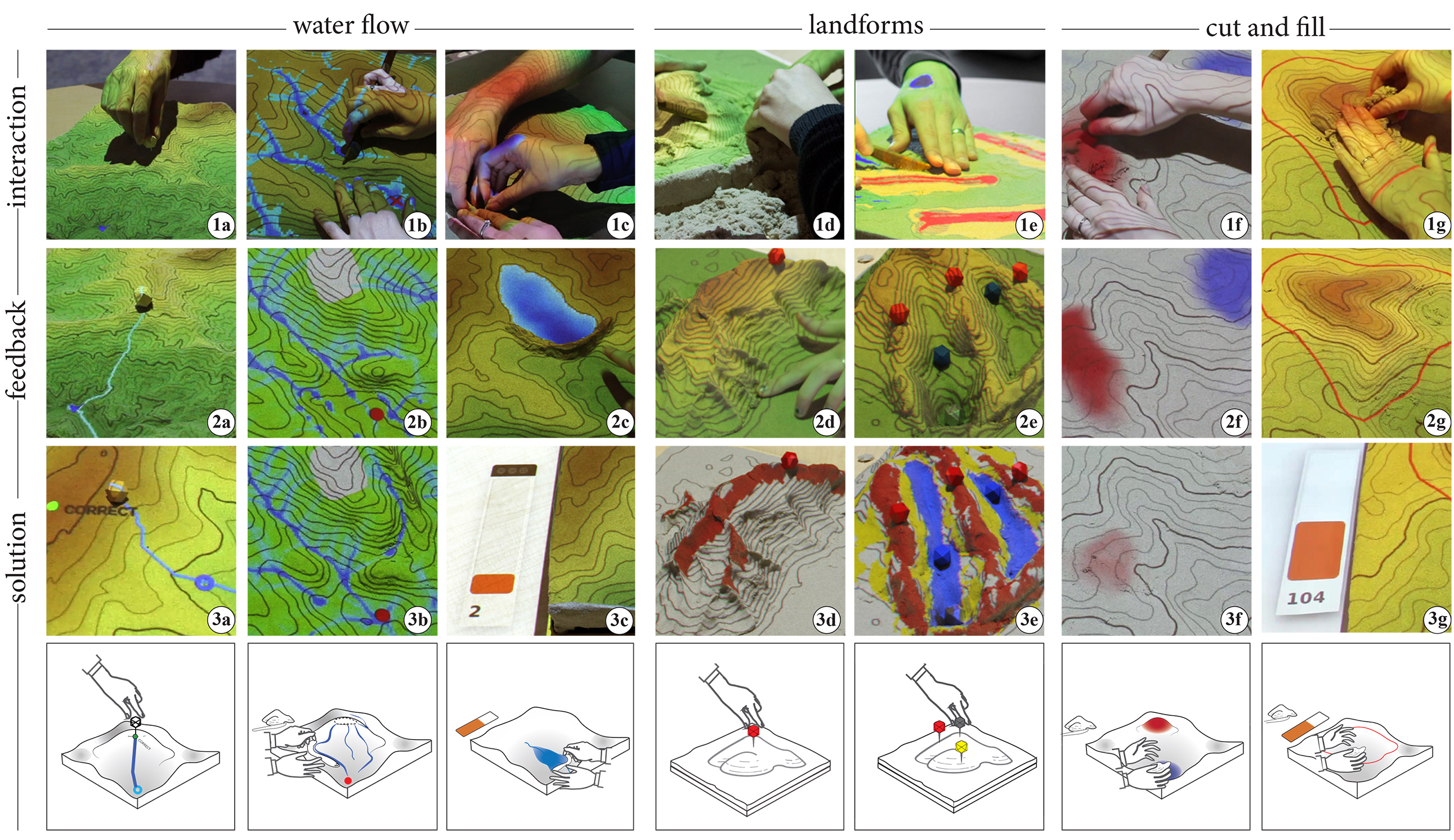
Evaluation Materials
Assessed students’ acquisition & |
 |
Measured student’s knowledge specific |  |
Measured student’s knowledge specific |  |
Results & Contributions
- Tangible Landscape supports both improved user experience as well as marginal, task-specific knowledge building
- Several implications for the design and implementation of tangible teaching methods for learning about Landscape Architecture (and other topics)
Acknowledgements - Software design & development: Drs. Anna Petrasova, Vaclav Petras, Payam Tabrizian, and Brendan Harmon
- Study implementation: Carla Delcambre of the Landscape Architecture department and her Grading and Drainage course at North Carolina State University
Reference
- Millar, G. C., Tabrizian, P., Petrasova, A., Petras, V., Harmon, B., Mitasova, H., & Meetenmeyer, R. K. (2018). Increasing Underrepresented High School Students' STEM Career Awareness and Interest: An Informal Geospatial Science Program American Geophysical Union, Fall Meeting 2018, December 12, 2018.
Other work Increasing Underrepresented High School Students’ STEM Career Awareness and Interest: An Informal Geospatial Science Program
- Research Objective: Develop activities with Tangible Landscape and other related curricula lessons to increase underrepresented high school students' spatial thinking and interest in GIS (STEM)
- Lead evaluative procedures for:
- Improving student competence in science
- Nurturing student enthusiasm for science
- Interesting students in research or other science-related careers
Developed Activities
| Water Flow |
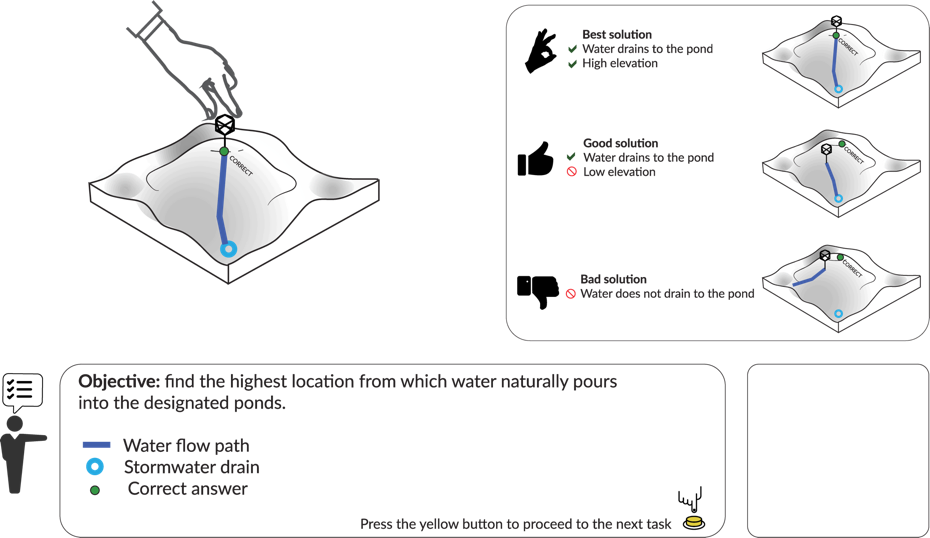
|
Trail Planning |
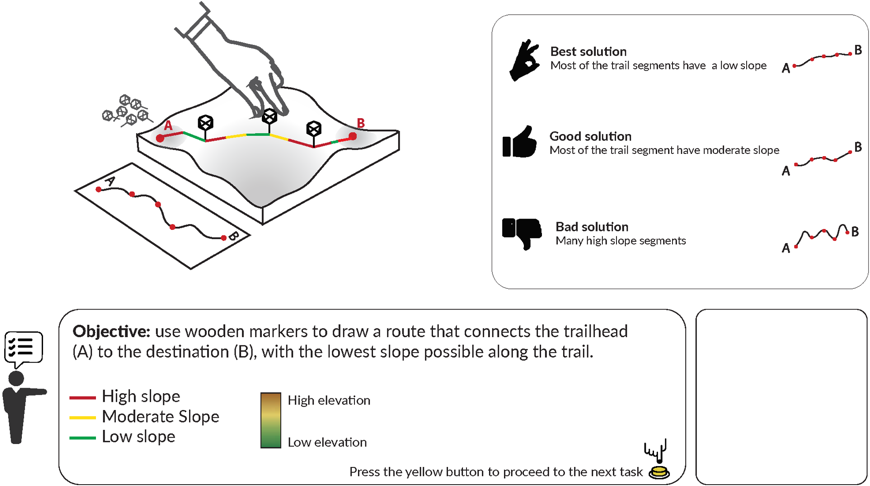
|
| Landforms |

|
Channeling |
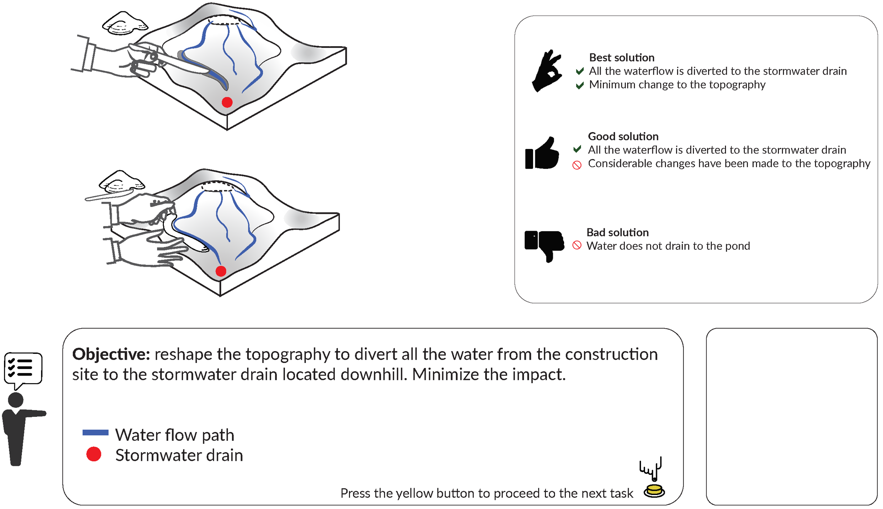
|
| Cut & Fill |

|
Ponding |

|
See Developed TL Activity Website: gcmillar.github.io/Tangible-Landscape-Activities-GAPS/index.html
Results & Contributions
- Goal 1: Improving student competence in science
- Average 3.39 (out of 4) on being able to explain background material during project presentations
- Goal 2: Nurturing student enthusiasm for science
- 56% of participants indicated an increased interest in learning science
- Goal 3: Interesting students in research or other science-related careers
- 80% of parents stated their child gained skills to use in a STEM career
- Program facilitation: Drs. Eric Money, Kyle Bunds, Helena Mitasova
- Millar, G. C., Money, E.S., Bunds, K.S., Mitasova, H., & Meetenmeyer, R. K. (2018). Increasing Underrepresented High School Students' STEM Career Awareness and Interest: An Informal Geospatial Science Program American Geophysical Union, Fall Meeting 2018, December 12, 2018.
Chapter 2 Space-time Analytics of Human Physiology for Urban Planning
- Research Objective: Using mobile sensing to improve the understanding of how people experience their environment.
- How?
- Examining spatial variation in people’s physiological responses in relation to the surrounding environment, to provide urban planners objective metrics on how individuals experience urban design elements.
- CHIPS cycle highway project (with Ondrej Mitas, Joost de Kruijff, Lisette Hoeke, Paul de Coevering)
- CELTH Storysperience project (with Ondrej Mitas, Moniek Hover, Marcel Bastiaansen, Wilco Boode)
CHIPS: Cycle Highway Project
- Test new wayfinding concepts (signage)
- Participants: 12
- Type of bike: e-bike
- Cycle track: 18 km cycle highway
- Before and after implementing new wayfinding
Study Area & Cycle Track

|
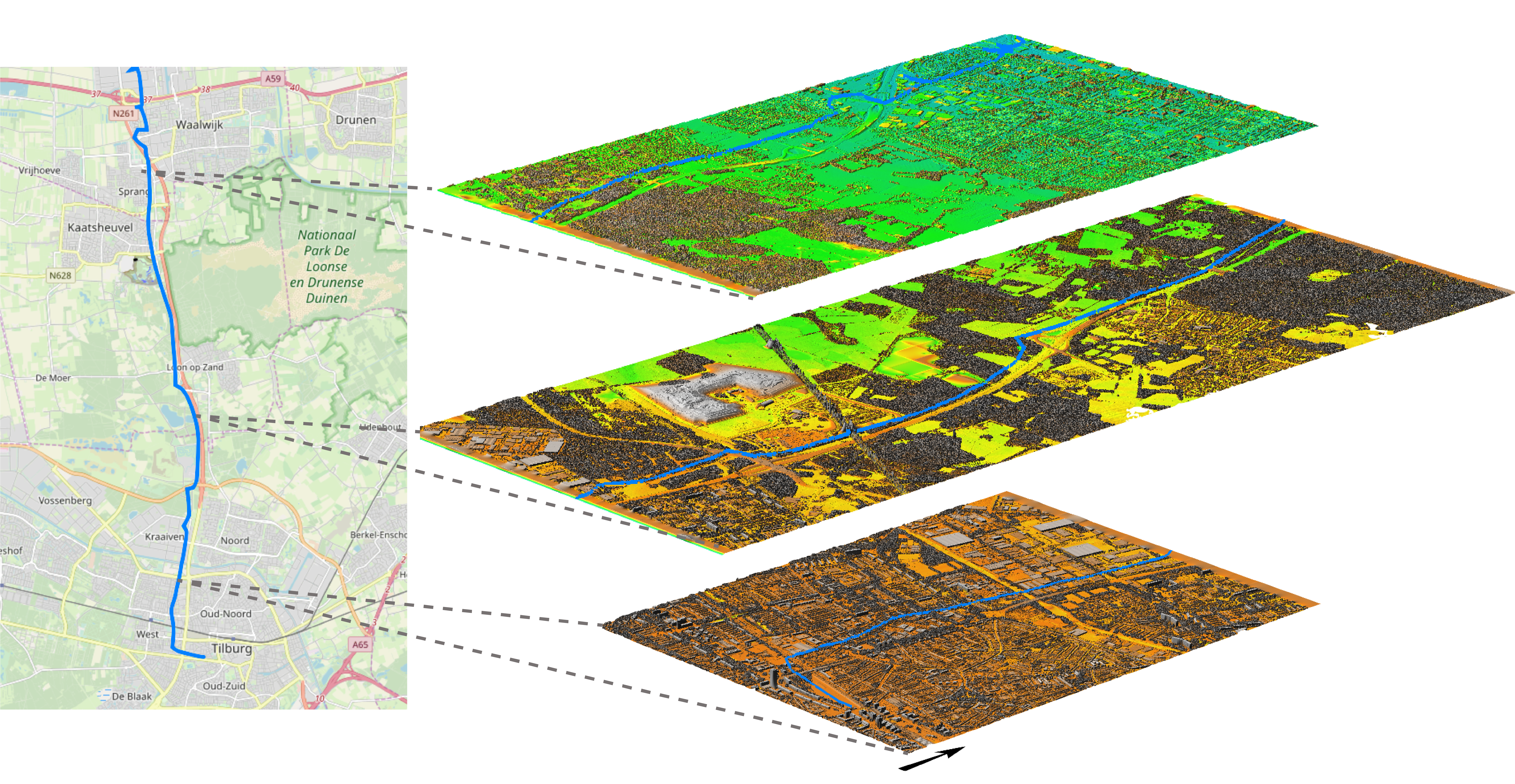
|
Data Collection
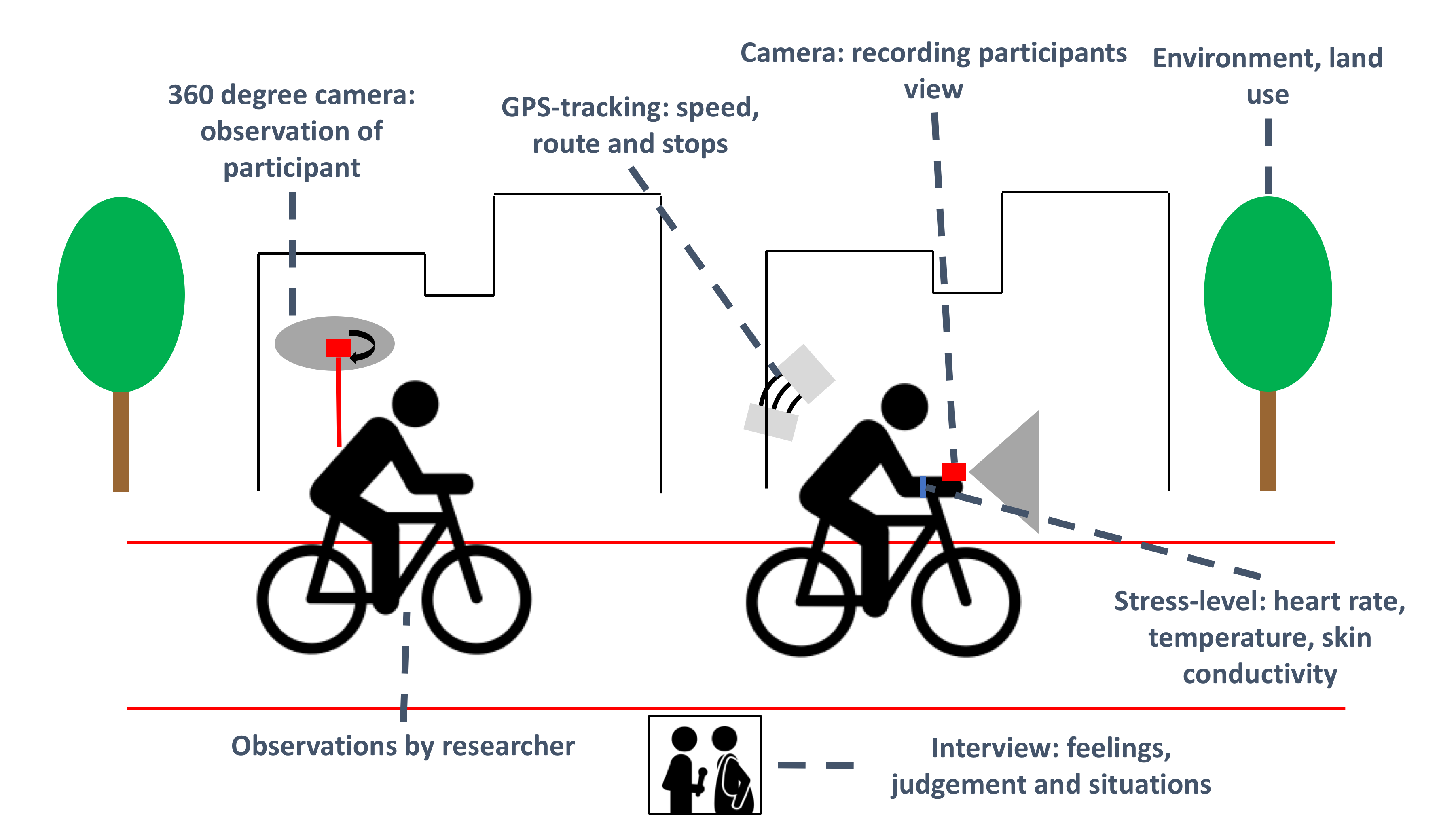
|
Credit: Lisette Hoeke | Breda University of Applied Sciences
Chapter 3 PoPS: A Spatial Decision-Making Support Framework for Plant & Pest Management Scenarios
- Research Objective: Assess the effectiveness and ability of PoPS framework for facilitating plant & pest management decision-making
- Design and development work for:
- effective communication of adaptive management through Tangible Landscape & PoPS Dashboard
- Two use cases:
- Sudden Oak Death
- Spotted Lantern Fly (PoPS)
SOD: Upcoming Evaluation Efforts
| Pre-workshop | Post-workshop | Semi-structured Interview |
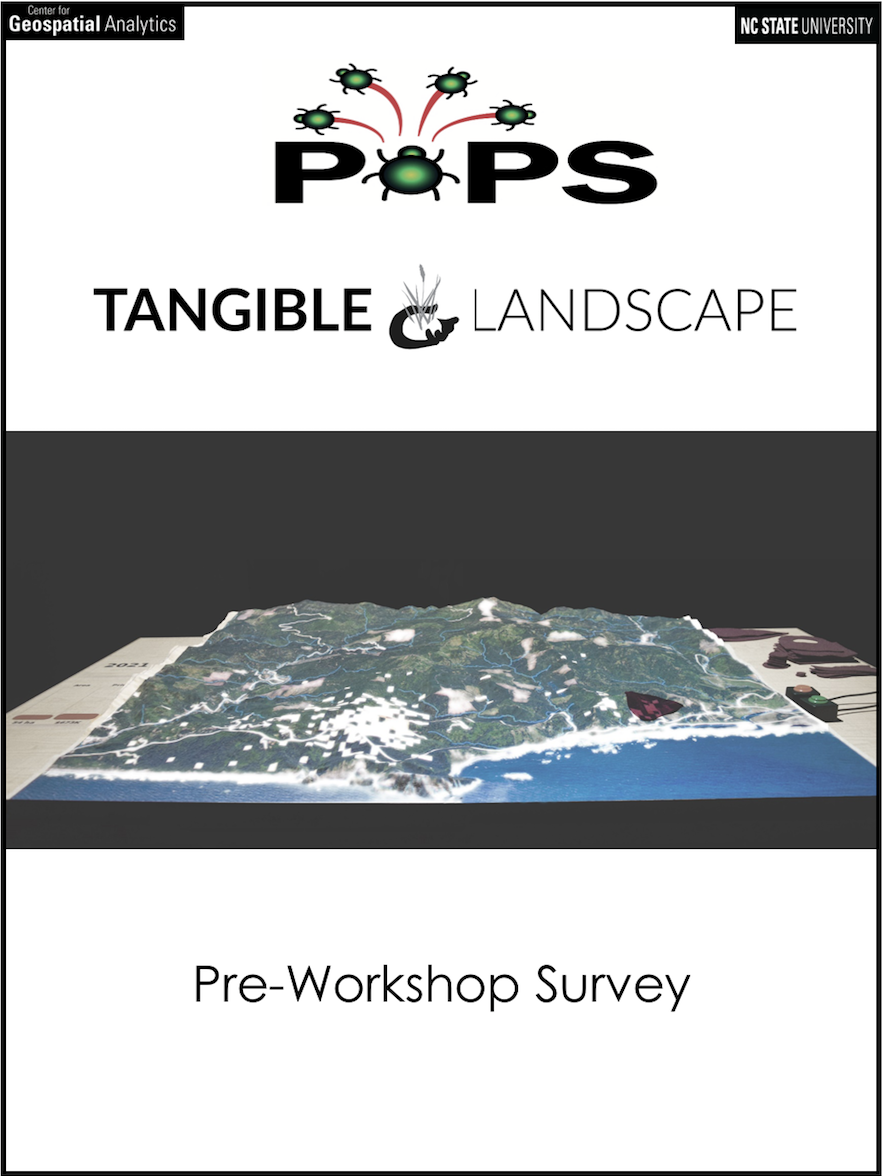 |
 |
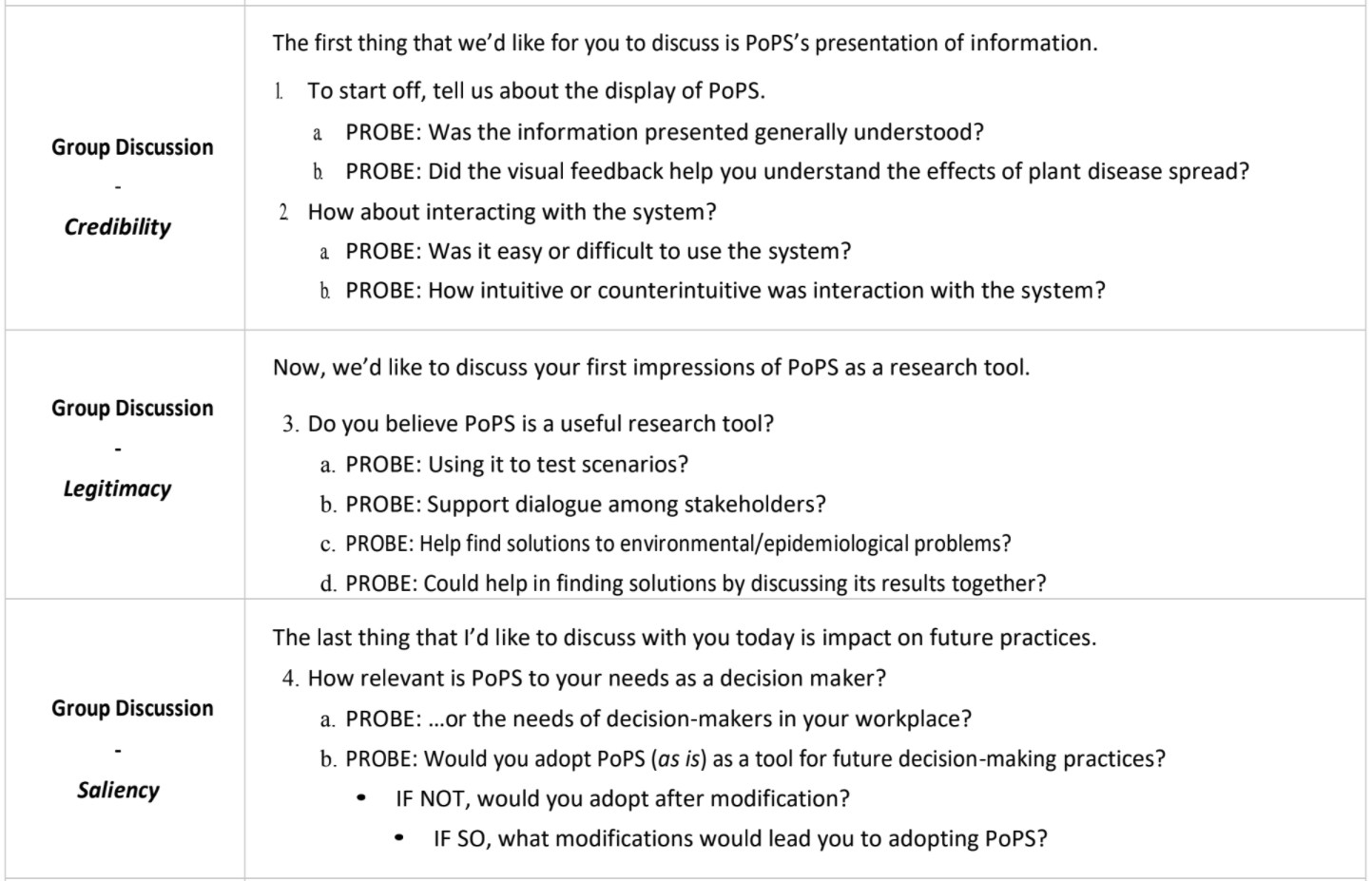 |
PoPS: User Interaction Design & Development
| Landing Page | Welcome Page | Home Page |
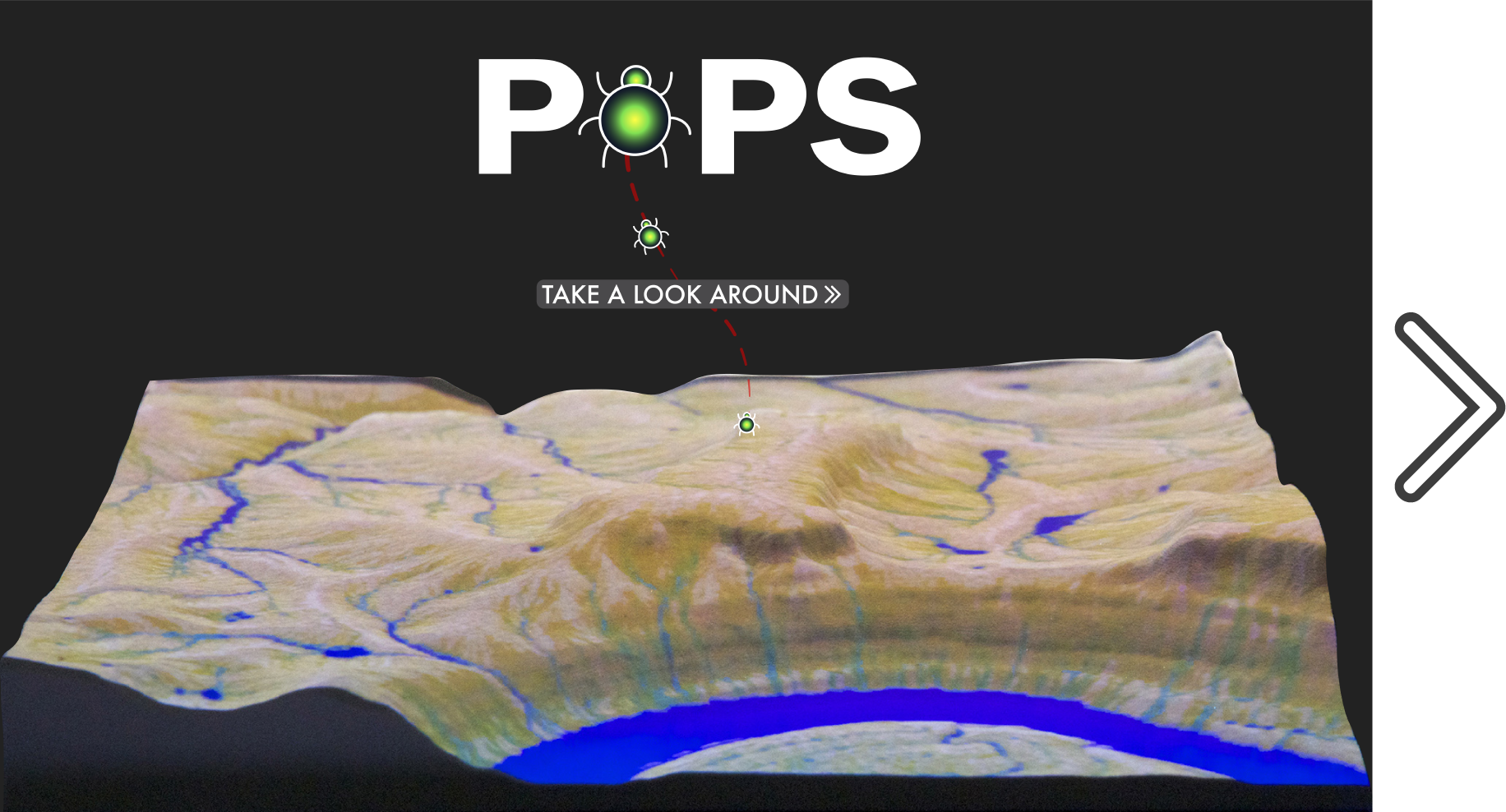 |
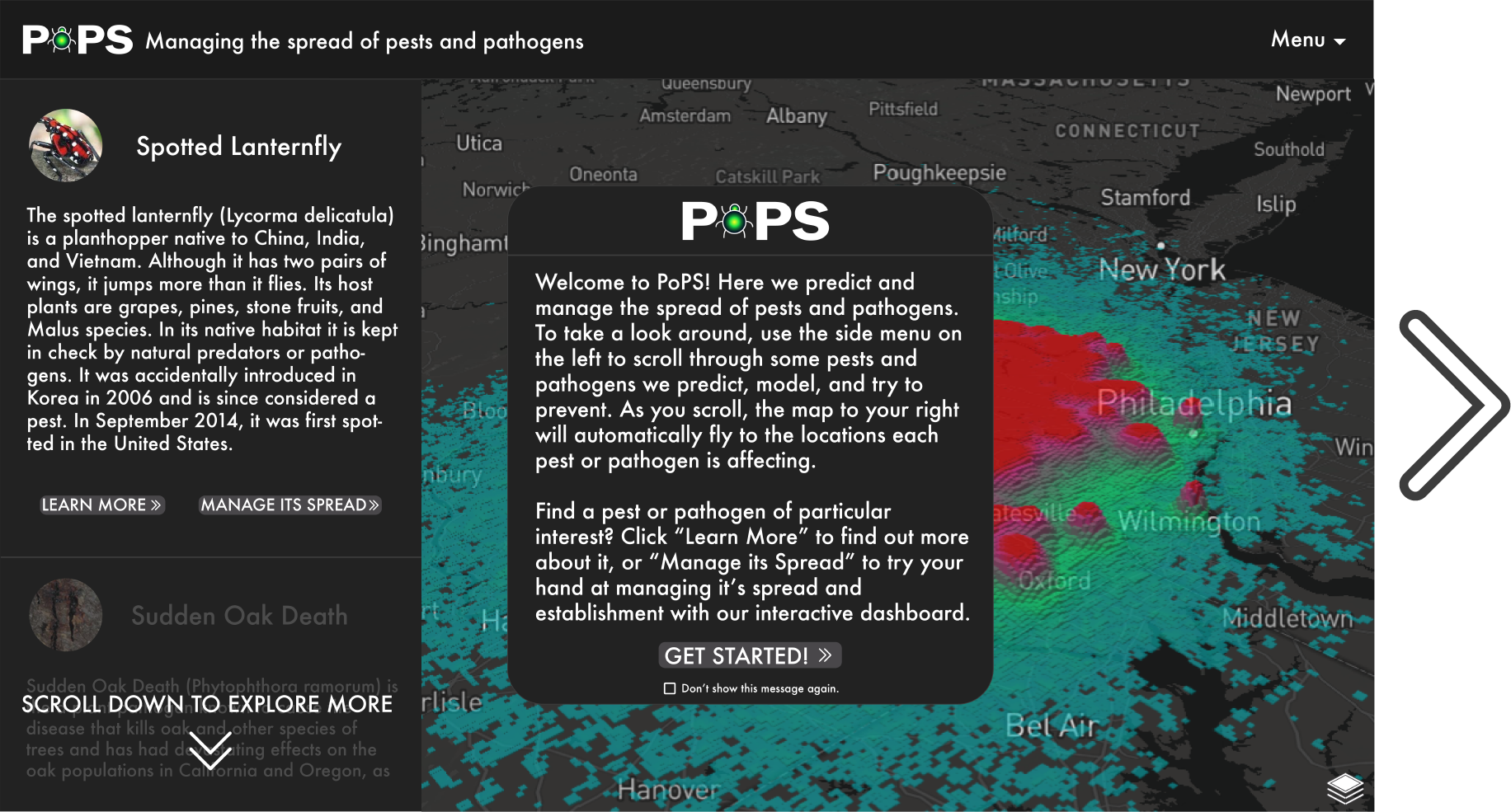 |
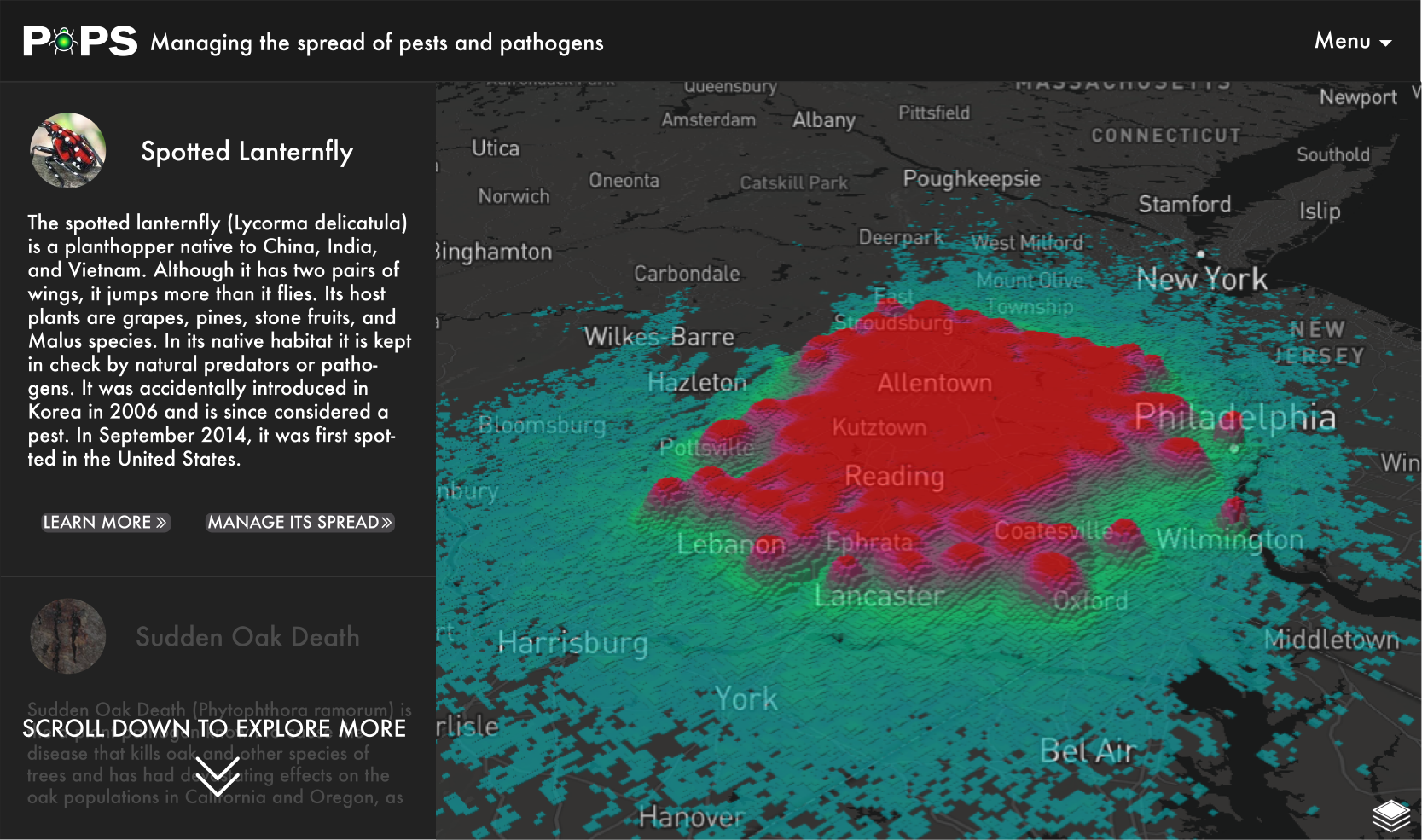 |
Ongoing Analytic Development: Mapping People Toolbox
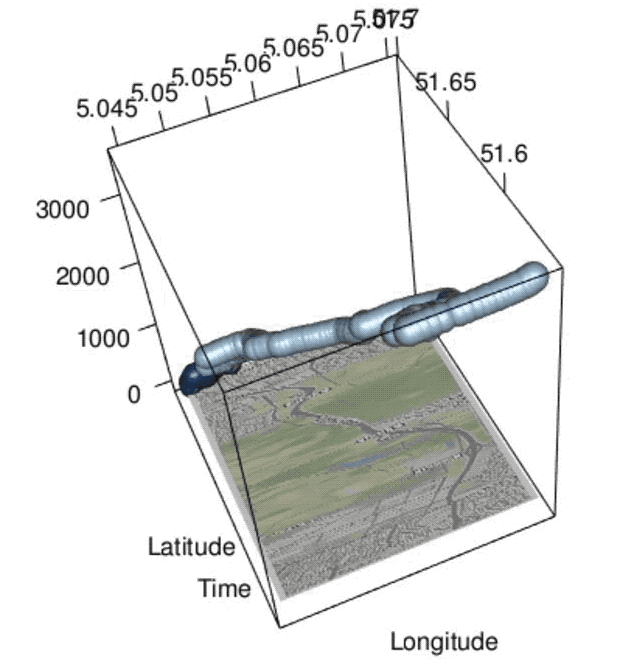 |
|
Related Publications
Software & Applications
Related Presentations
|
|
|
|
|
|
|
|
|
|
Extending Dissertation Work
- Follow up study to:
Tangible Landscape: A Hands-on Method for Teaching Terrain Analysis - Collaborating with Drs. Brendan Harmon & Nicholas Serrano at Louisiana State University
- Comparing different user interfaces and teaching methods to substantiate the most effective way for teaching Landscape Architectural grading and site engineering
- Short paper on geospatial software application Stress3d:
Stress3d: An Interactive & 3D Framework for Exploring Human Behavior - Collaborating with Harvard Medical School to develop visualizations for their Nurses' Health Study
Timeline
| Fall 2019 | Spring 2020 | Summer 2020 |
|---|---|---|
|
|
|
Presentation Link: gcmillar.github.io/presentations/pre-proposal
Extra Slides
User Experience Survey
(Ras et al., 2012)
- Examined how students perceived and interacted with Tangible Landscape, & how they collaborated to solve a problem
- Constructs:
- Performance expectancy
- Pragmatic quality:
- physical objects (wooden carving tools, physical landscape model)
- visual objects (projection, digital feedback)
- Effort expectancy
- User experience
Results
Knowledge Building: Tangible Lessons
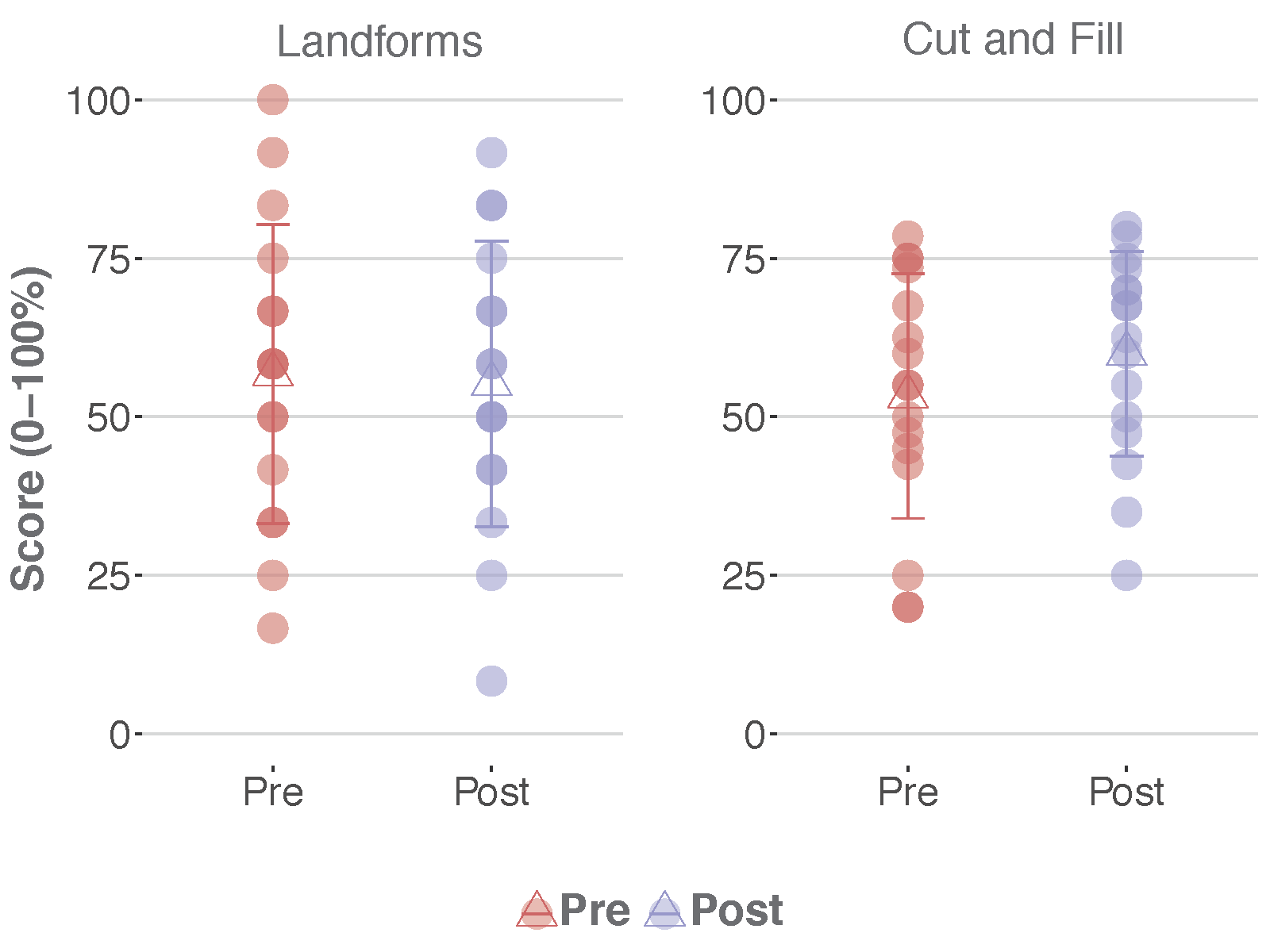
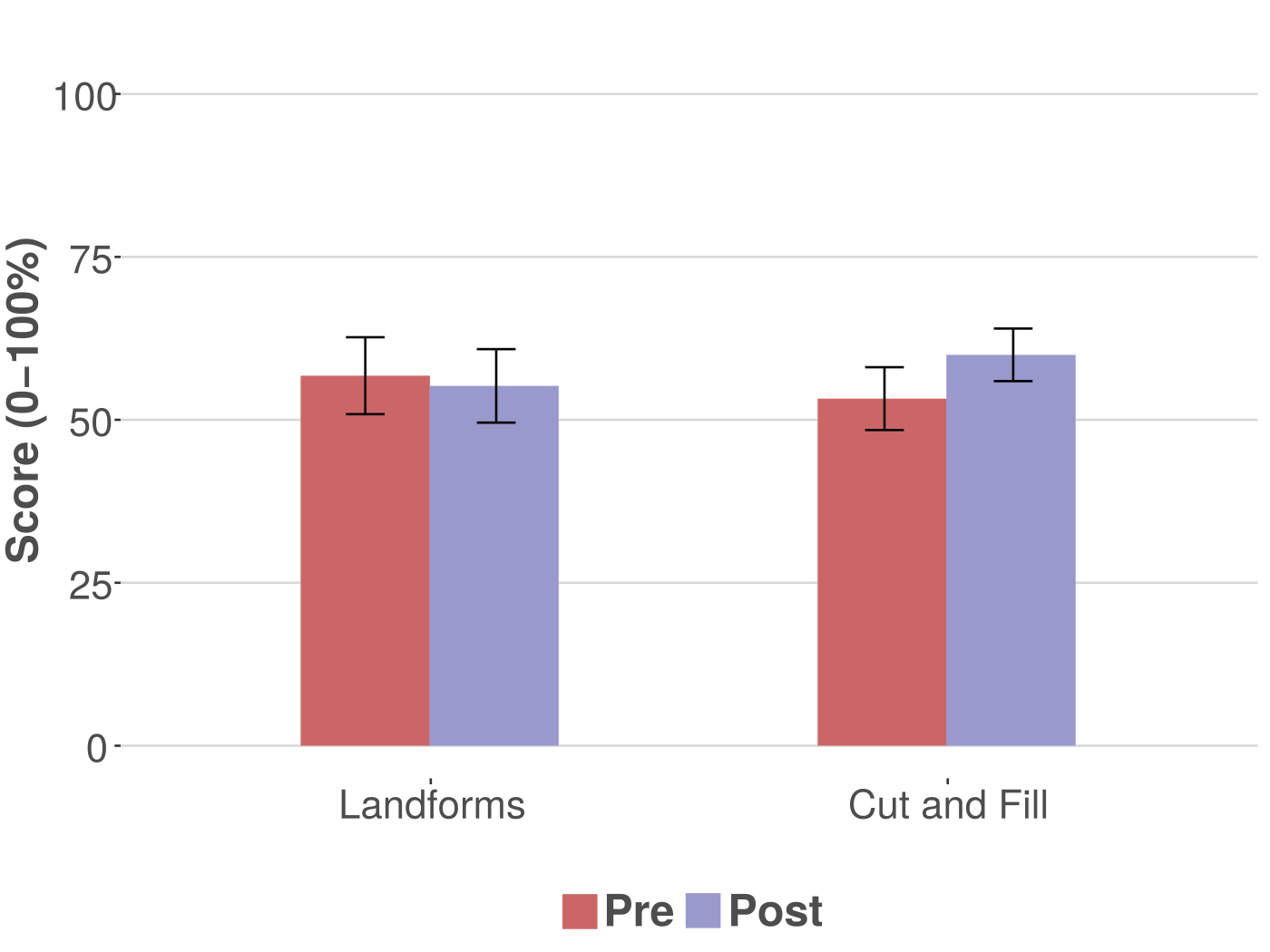
| Individual Scores | Mean Scores |
Results
Knowledge Building: TMA
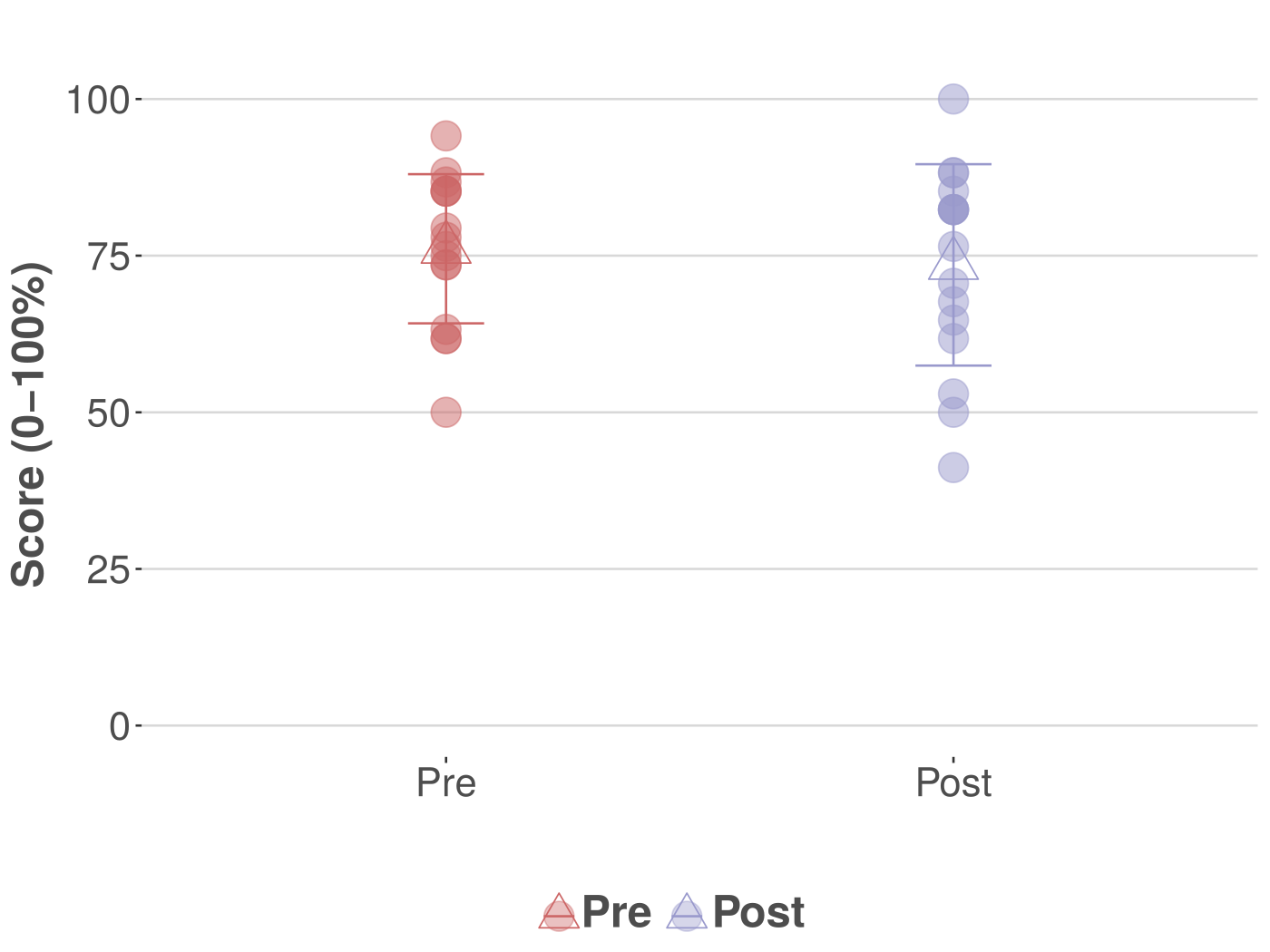

| Individual Scores | Mean Scores |
Results
User Experience
- All items rated above the neutral value of 4 (out of 7)
- Most advantageous aspects of Tangible Landscape?
- ability to explore various solutions for the given problems (e.g., water flow, landforms, cut and fill)
- physical objects allowed students to change parameters (e.g., location of solution points) very quickly
- projected visual feedback helped them better understand the effects of changing those parameters